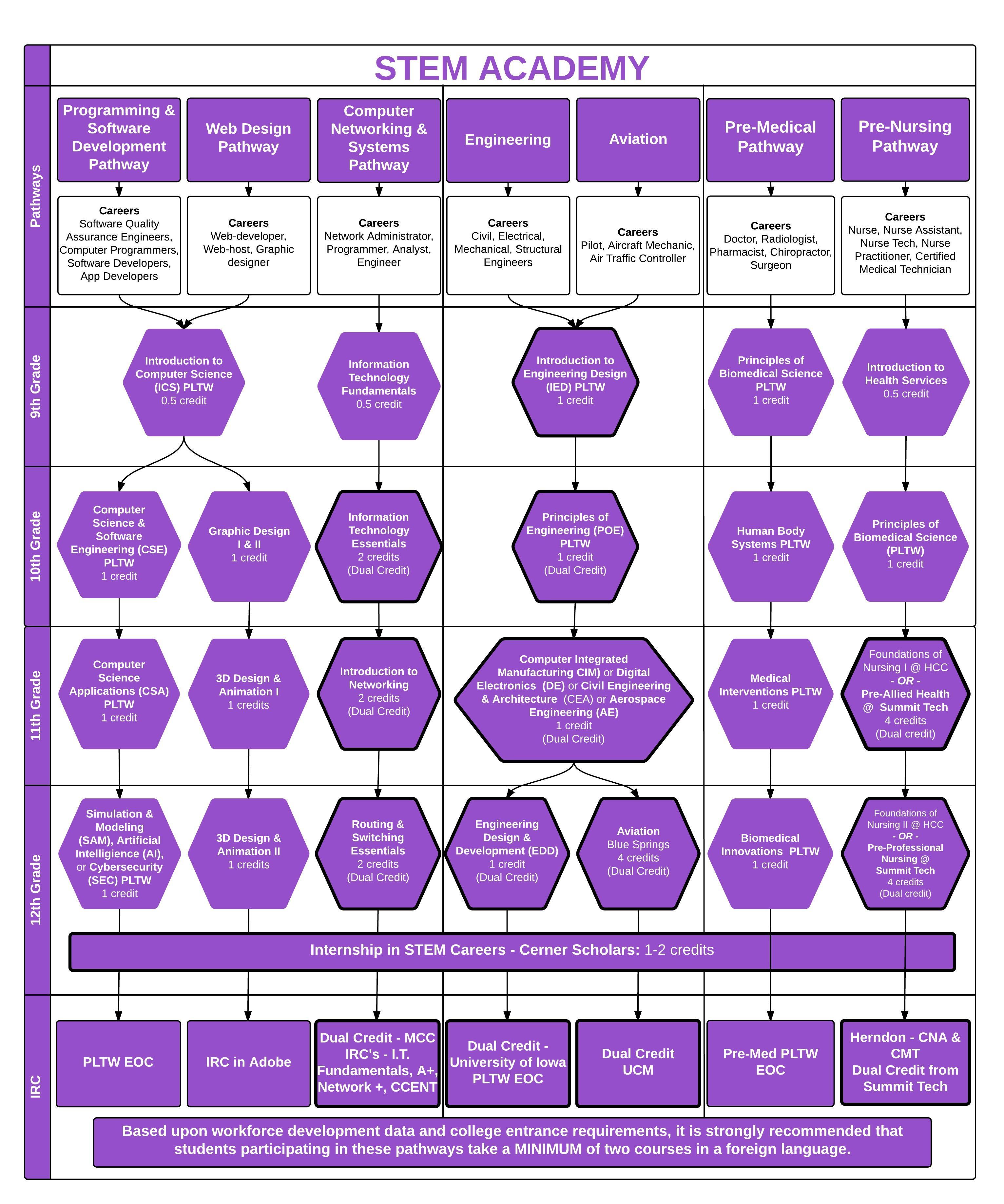STEM Academy: Computer Networking & Systems Pathway

NEW: Information Technology Fundamentals (0.5 credit PAR, Gr. 9-12)
PC Hardware and Software provides a comprehensive overview of computer fundamentals and an introduction to advanced concepts. It is intended for individuals who want to pursue careers in IT and gain practical knowledge of how a computer works. This portion of the course provides an excellent introduction to the IT industry and interactive exposure to personal computers, hardware, and operating systems. Students participate in hands-on activities and lab-based learning to become familiar with various hardware and software components and discover best practices in maintenance and safety. Students who complete IT Essentials will be able to describe the internal components of a computer, assemble a computer system, install an operating system, and troubleshoot using system tools and diagnostic software. They will also be able to connect computers to the Internet and share resources in a networked environment.
3200: Information Technology Essentials - Dual Credit (2 credits PAR, Gr. 10-12)
Prerequisite: Information Technology Fundamentals
PC Hardware and Software provides a comprehensive overview of computer fundamentals and an introduction to advanced concepts. It is intended for individuals who want to pursue careers in IT and gain practical knowledge of how a computer works. This portion of the course provides an excellent introduction to the IT industry and interactive exposure to personal computers, hardware, and operating systems. Students participate in hands-on activities and lab-based learning to become familiar with various hardware and software components and discover best practices in maintenance and safety. Students who complete IT Essentials will be able to describe the internal components of a computer, assemble a computer system, install an operating system, and troubleshoot using system tools and diagnostic software. They will also be able to connect computers to the Internet and share resources in a networked environment.
NEW: Introduction to Networking - Dual Credit (2 credits PAR, Gr. 11-12)
Prerequisite: Information Technology Essentials
This portion of the course introduces the architecture, structure, functions, components, and models of the Internet and other computer networks. It uses the OSI and TCP layered models to examine the nature and roles of protocols and services at the application, network, data link, and physical layers. The principles and structure of IP addressing and the fundamentals of Ethernet concepts, media, and operations are introduced to provide a foundation for the curriculum. Labs use a “model Internet” to allow students to analyze real data without affecting production networks. Packet Tracer (PT) activities help students analyze protocol and network operation and build small networks in a simulated environment. At the end of the course, students build simple LAN topologies by applying basic principles of cabling, performing basic configurations of network devices such as routers and switches, and implementing IP addressing schemes.
NEW: Routing and Switching Essentials - Dual Credit (2 credits PAR, Gr. 12)
Prerequisite: Introduction to Networkin
The final portion of the course describes the architecture, components, and operation of routers, and explains the principles of routing and routing protocols. Students analyze, configure, verify, and troubleshoot the primary routing protocols RIPv1, RIPv2, EIGRP, and OSPF. By the end of this course, students will be able to recognize and correct common routing issues and problems. Students complete a basic procedural lab, followed by basic configuration, implementation, and troubleshooting labs in each chapter. Packet Tracer activities reinforce new concepts, and allow students to model and analyze routing processes that may be difficult to visualize or understand. Students must successfully complete Network Fundamentals to move on to this section.
